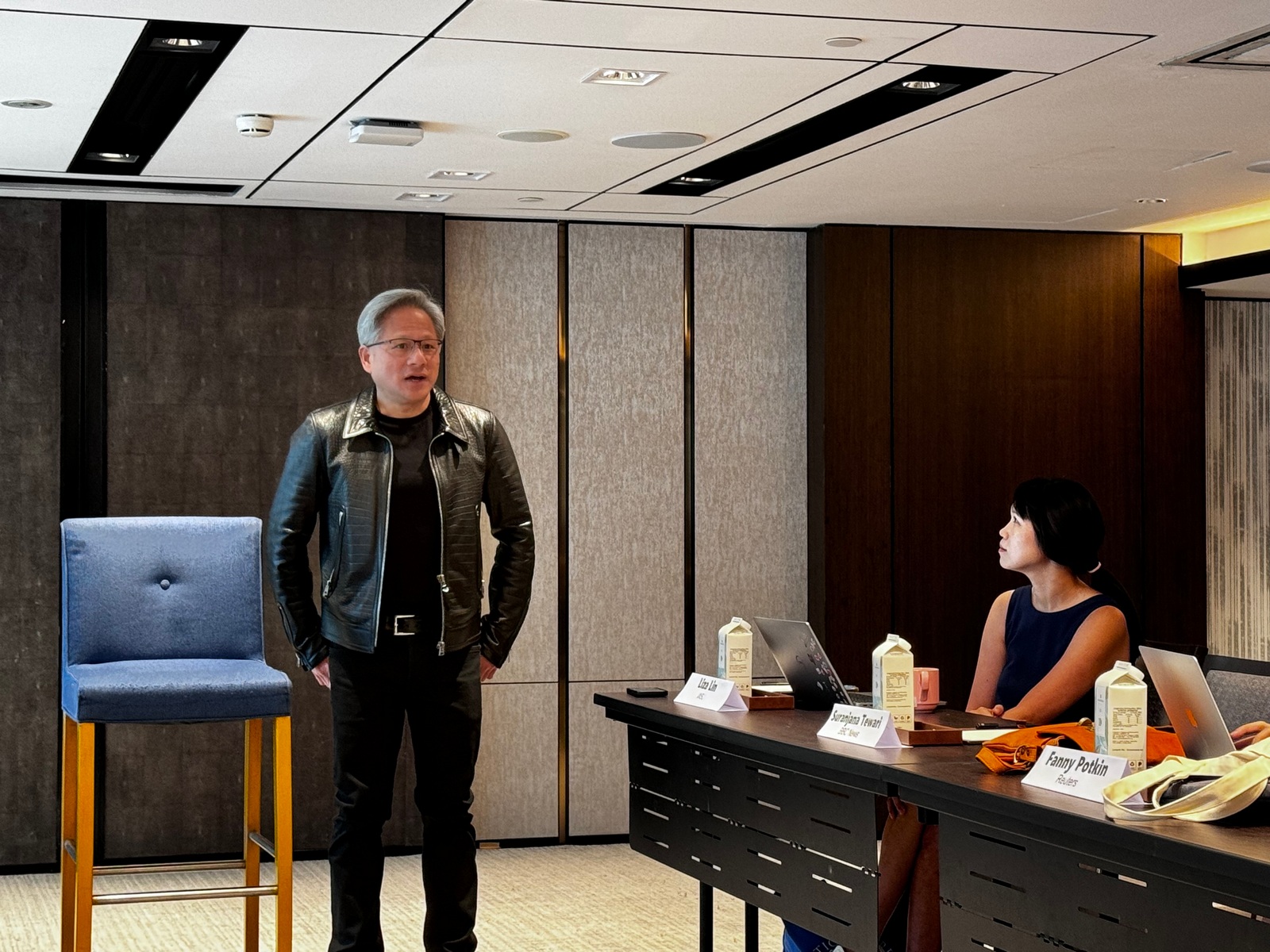
Generative AI, which burst on to the world stage a year ago, will transform economies and create new industries because of its ability to create new intelligence, said Jensen Huang, chief executive of Nvidia.
It can understand and learn almost anything that has structure, such as the meaning of sounds, words, pictures, chemical and protein structures, the workings of environmental physics and many other subjects, he pointed out.
GenAI processes this data to generate intelligence on a variety of topics such as new protein structures for drugs and parts for manufacturing as well as innovative solutions to address climate change.
Huang was speaking to at a media briefing in Singapore on December 6. He is in Singapore for a short visit where he had meetings with Singapore Prime Minister Lee Hsien Loong and Jacqueline Poh, managing director of the Economic Development Board, as well as with startup enterpreneurs and other partners.
Nvidia, which is valued at over US$1 trillion, is the market leader for graphics processing units (GPUs), the specialised chips used to accelerate the training and inference of large language models (LLMs) that power GenAI.
Huang applauded Singapore’s efforts to develop Southeast Asia’s first LLM catering to the region’s diverse culture, value systems and languages because no one would care more about multi-cultural Singapore than the country itself.
“So Singapore must take control of its own LLM,” he noted. “It is in the national interest to do this because you cannot outsource digital intelligence of Singapore when you own the LLM data. That is the most vital asset.”
The Infocomm Media Development Authority (IMDA) recently announced a S$70 million National Multimodal (LLM) Programme. It includes an initiative called the SEA-LION (Southeast Asian Languages in One Network) model, that is more representative of Southeast Asia’s cultural contexts and linguistic nuances.
On the issue of regulation, Huang said that it is important to balance regulation and innovation. Advancing technology will improve the safety of the technology, he asserted.
Pointing to the airline and automotive industries, he said the planes and vehicles built today were much safer than those built several decades ago. Innovation can also lead to the development of new safety features and guard rails.
“We are far from having GenAI tech that is effective in every part of the technology spectrum,” he said. “If there is over regulation, then we cannot advance.”
Asked by the media on the competition that Nvidia faces, Huang said that it is difficult for rivals to catch up because it has a full technology stack of hardware and software that enables developers to build complete GenAI solutions.
However, Nvidia is not without its challenges. Large companies like Huawei and Intel as well as many startups are developing products that can compete with Nvidia.
Demand for Nvidia’s GPUs, however, remain high. Sales this year was very good, said Huang. In its financial results for the third-quarter ending October 29, Nvidia hit record revenues of US$18.12 billion, up 34 per cent from the previous quarter and a huge rise of 206 per cent from a year ago.
“My sense is that we will see significant demand for the next 10 years,” said Huang. “This is the beginning of a new technology cycle.”






